Table of Contents
Often, I read about natural light photographers who prefer a high-ISO setting above the use of flash. The latter is considered unnatural and unflattering light. Perhaps that photographer should consider the benefits flash can offer without the sacrifice of a natural-looking photo.
There are two sorts of photographers, I think. There is the one that will avoid flash at all costs, and there is the one that will use all means to achieve the best quality of light possible, even if that means the use of additional light produced by a flash.
Use Directional Ambient Light When Possible
As we all know, directional light is the best light available. We use it everywhere, like in landscape photography, product photography, portrait photography, and if possible, wedding photography. The use of shadows will bring depth to the image, making it much more interesting. It can also give the much-wanted cinematicc look.
When directional light is available, it is often enough to make a great image. If you use the light that falls through windows and doors, just position your subject at the right spot and take the photo.
A strong backlight can also work, but without additional light, the subject will become a silhouette. Sometimes, that’s enough for a great image. A good photographer will recognize the possibilities the ambient light offers and use it if possible.
During events like weddings, it won’t be always possible to adjust the position of the couple and guests. You have to use the light that is present. It sometimes means you don’t have directional light, or it will have the wrong direction.
Ambient Light Without Any Direction or the Wrong Direction
I encounter terrible light conditions quite often. Venues are poorly lit, often by lights hanging from ceilings with just a few small windows that won’t make any difference. It’s easy to use a high ISO setting to get the shutter speed necessary for sharp photos. Modern cameras allow amazingly high ISO settings without a great risk of unacceptable noise levels. On most occasions, that will still not be the best way to go.
I found a good example in my archives of a wedding from some time ago. The first one is a photo with the exposure set for the ambient light. I needed ISO 1,600 for an acceptable shutter speed. But the scenery is lit by ceiling lights only, without any direction whatsoever. Therefore, the faces of the bridal couple and vicar are shrouded in shadows.
For the second photo in this example, I’ve used a flash to lighten up the faces. Suddenly, the photo is much better. I kept the exposure for the ambient light, but added a little bit of light to get a better quality of light. Although flash is used, the image still has a natural look. In other words, it’s not an ugly flash photo.
Go for Balance Between Ambient Light and Flash
The main rule for this kind of flash photography is the separation of settings for both flash and ambient light. These are two different things and can be set separately. Keep the camera settings for the ambient light, perhaps one stop underexposed, and the flash can be used to correctly expose the subject. This way, you prevent the strong light falloff that occurs when the flash is too strong. It means you have to use a high ISO setting if necessary.
By aiming the light towards the left or right, you will change the flashlight into directional light, especially when you will flag the flash to prevent direct light onto the subject. This will produce great directional light, as if you are using the natural light from a window. Whatever you do, never use the ceiling for bouncing flash If you do, as there is the risk of unflattering shadows under eyebrows, nose, and skin.
Flash and Backlight
Sometimes, there are many windows resulting in strong backlight. It will make the use of directional light much more difficult. Using only ambient light will either overexpose the background, or your subject will become too dark. In worst-case scenarios, the subject will become a silhouette. Fill flash will rescue you from this situation.
The use of a high-ISO setting won’t be the answer because it won’t change the light situation. But if you use a flash with care, the result will give a natural look.
Post-Processing to the Rescue?
You might think you can use high-ISO settings and abandon flash. After all, the final result can be made in post-processing. Although it might be tempting, correcting photos in post-processing software will be time-consuming and perhaps result in an increase of noise levels where the shadows are lifted too much. Especially when you already used an extremely high-ISO setting, this can damage the quality of the photo or even render it unusable.
If you’re a natural light photographer that doesn’t use flash because it feels artificial, perhaps it is wise to reconsider. By learning to mix flash with the ambient light and using it in a wise and subtle manner, it will result in a photo with a great quality of light.
Are you using flash or do you prefer the use of the available light? If you do, please let me know in the comments and tell me why you won’t use flash. I’m looking forward to your response.
https://fstoppers.com/lighting/should-use-flash-indoor-photography-or-only-high-iso-setting-595410




